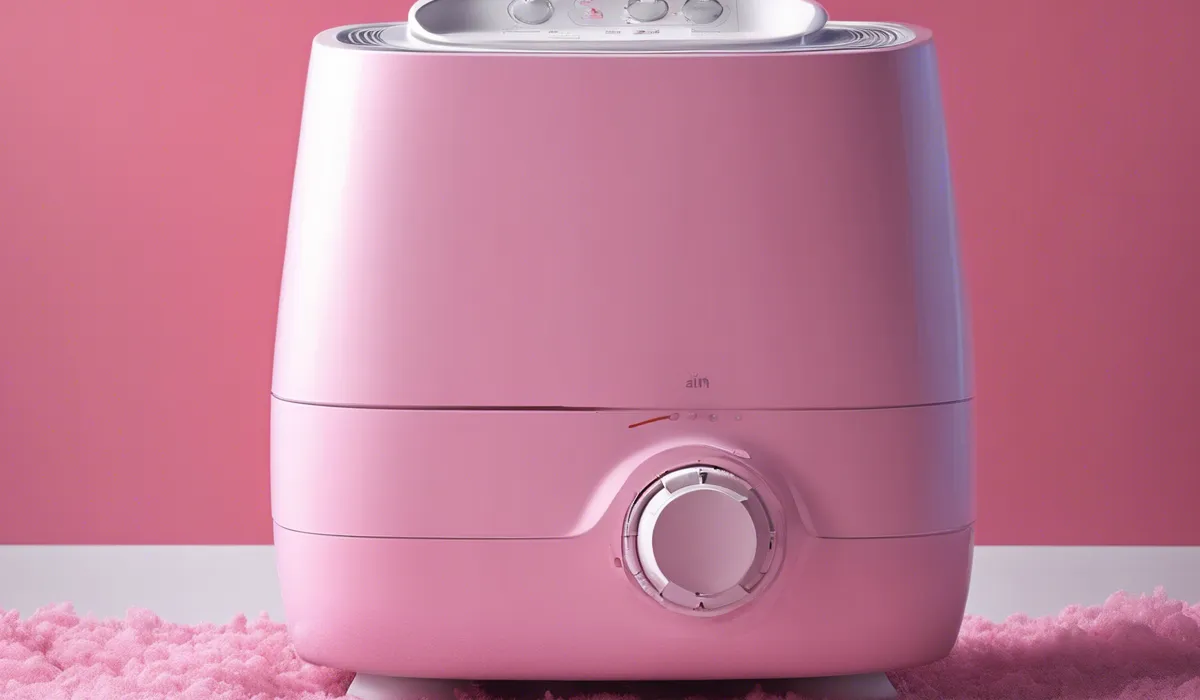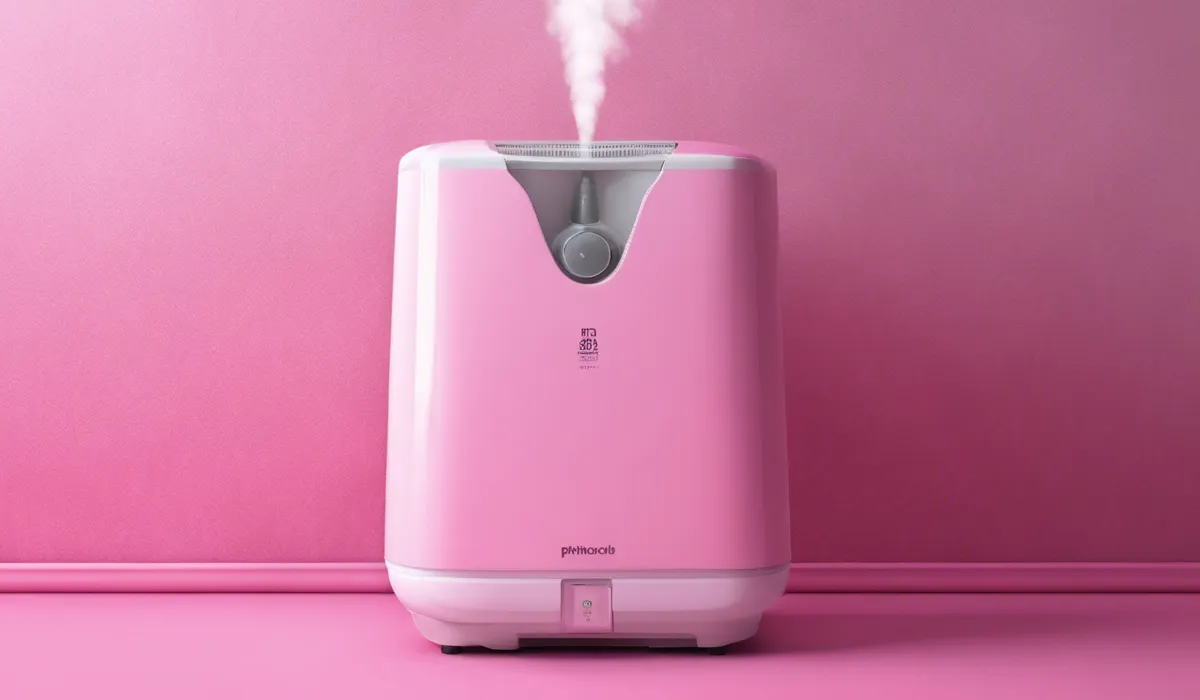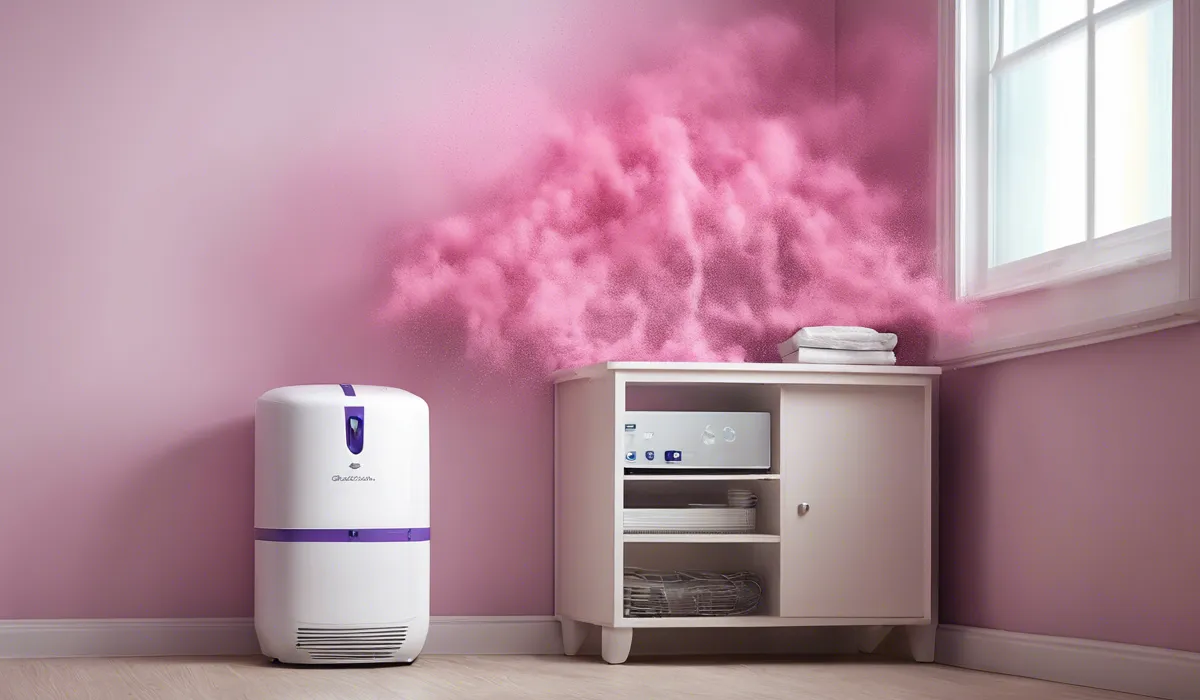Pink mold in humidifiers can be harmful as it often consists of bacteria and fungi, including Serratia marcescens, which can cause respiratory issues if inhaled. Regular cleaning is essential to prevent health risks.
Understanding Pink Mold: What Is It?

Defining Pink Mold
Pink mold is a common term for a variety of microorganisms that display a pinkish color. This misleading term can include a range of bacteria and fungi that show up in moist environments.
Unlike the name suggests, pink mold isn’t actually a mold in many cases, but often a bacterium called Serratia marcescens.
It’s important to understand that the pink hue we see is due to a pigment produced by these organisms, which can thrive in a variety of environments, especially where there’s moisture and organic material to feed on.
Microorganisms Causing Pink Mold
While Serratia marcescens is often responsible for the pink residue, some actual molds like Aureobasidium and Fusarium can also take on a pinkish color.
These microorganisms are quite adaptable and can inhabit a wide range of damp spaces.
They’re not just limited to your bathroom tiles or shower curtain; they can also be found lurking in places like humidifiers, where they have a steady supply of moisture to grow.
Thriving Environments for Pink Mold
Pink mold finds a comfortable home in humidifiers due to the constant presence of water. Humidifiers, designed to add moisture to the air, create an ideal environment for these microorganisms to flourish.
The combination of water and the room’s natural environment offers the perfect breeding ground for pink mold.
It’s important for humidifier users to be extra vigilant about maintenance to prevent the growth of these organisms.
Distinguishing Pink Mold from Other Molds
Unlike the dark green or black spots commonly associated with mold, pink mold is, as its name suggests, pink.
This color difference is one of the easiest ways to tell pink mold apart from other types of mold.
However, the distinction is not merely visual. Pink mold often signifies the presence of bacteria rather than true fungi. Understanding these differences is crucial for proper treatment and prevention methods.
Health Risks Associated with Pink Mold Exposure

Short-term Health Effects of Pink Mold
Inhaling or coming into contact with pink mold spores can lead to various short-term health issues.
These might include coughing, sneezing, sore throat, and skin rashes. These symptoms are the body’s immediate response to unwanted invaders.
While anyone can experience these symptoms, they are often more pronounced in individuals who are sensitive to allergens.
Long-term Risks for Vulnerable Individuals
Continuous exposure to pink mold can pose significant health risks, especially for those with weakened immune systems, allergies, or asthma.
Long-term exposure can exacerbate asthma symptoms and lead to persistent respiratory issues.
People with compromised immune systems may also experience more severe reactions, as their bodies are less equipped to fight off the bacteria and fungi.
Risks for Infants, the Elderly, and Those with Respiratory Conditions
Infants, the elderly, and individuals with pre-existing respiratory conditions are particularly at risk when it comes to pink mold exposure.
These groups are more susceptible to infections and may suffer from more severe health complications if exposed to mold or bacteria.
It’s crucial to maintain a clean environment to protect these vulnerable individuals from potential harm.
Identifying and Addressing Exposure Symptoms
It’s essential to recognize the signs of mold exposure early. Symptoms can include respiratory difficulties, allergic reactions, and infections.
If you or someone in your household is experiencing these symptoms, it’s important to take action immediately.
This means removing the source of exposure and seeking medical advice to address the symptoms properly.
Prevention and Remediation Strategies

Cleaning and Maintenance of Humidifiers
To prevent pink mold growth in your humidifier, regular cleaning and maintenance are imperative.
This includes emptying the water tank, wiping down all surfaces with a disinfectant, and allowing the tank to dry completely before refilling.
It’s recommended to clean your humidifier at least once a week to keep it free from mold and bacteria.
Controlling Home Humidity Levels
Managing the humidity levels in your home is another effective way to prevent mold growth. Aim to keep indoor humidity between 30% and 50%.
You can use a hygrometer to monitor levels and employ dehumidifiers or air conditioners to maintain the optimal range.
This will not only help in preventing pink mold but also other types of mold and mildew.
Safe Removal of Pink Mold from Humidifiers
If you find pink mold in your humidifier, it’s important to clean it safely and effectively. Start by unplugging the device and disassembling it as much as possible.
Use a solution of water and white vinegar to scrub away the pink mold. Rinse thoroughly and let all parts air dry before reassembling.
Always wear gloves and a mask to protect yourself from exposure during the cleaning process.
Seeking Professional Help
When home remedies don’t suffice or if the pink mold issue is widespread, it may be time to seek professional help.
Mold remediation specialists can identify the root cause of the problem and provide a thorough cleaning.
Additionally, if health concerns arise due to mold exposure, consult with healthcare providers who can offer tailored advice and treatment options.
FAQs About Pink Mold in Humidifiers
Is pink mold in my humidifier dangerous to my health?
Yes, pink mold in humidifiers can be dangerous as it may contain harmful bacteria and fungi, such as Serratia marcescens, which can lead to respiratory issues if inhaled.
Can pink mold in humidifiers cause infections?
Yes, pink mold can potentially cause infections, especially in individuals with weakened immune systems, as it often harbors bacteria like Serratia marcescens.
How often should I clean my humidifier to prevent pink mold?
You should clean your humidifier at least once a week to prevent the growth of pink mold and other microorganisms, following the manufacturer’s instructions.
What should I do if I find pink mold in my humidifier?
If you discover pink mold in your humidifier, you should immediately stop using it and thoroughly clean and disinfect the unit before using it again.
Are there any health symptoms I should look out for if I’ve been exposed to pink mold?
If you’ve been exposed to pink mold, watch for symptoms such as coughing, difficulty breathing, or other respiratory issues and seek medical advice if any symptoms arise.
Final Thoughts
Pink mold in humidifiers, often consisting of bacteria and fungi such as Serratia marcescens, poses a health risk, particularly to the respiratory system.
Ensuring the regular cleaning of humidifiers is crucial to mitigate these dangers and maintain a safe environment.
